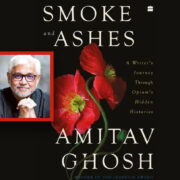This is Us: Indian Americans Have Lowest Poverty Rates Among Asian American Groups
- Although the they are often portrayed as economically and educationally successful, about one-in-ten Asian Americans live in poverty, according to a new report released by the Pew Research Center.

Indian Americans (6%) Filipino (7%) are among Asian American groups with lowest poverty rates, according to a new report released this week by the Pew Research Center. On the other hand, Burmese (19%) and Hmong Americans (17%) have the highest poverty rates. Of the 24 million Asians living in the United States, about 2.3 million live in poverty.
Findings of the report could come as a shock, author said, as Asian Americans are often portrayed as economically and educationally successful. However, “about one-in-ten Asian Americans live in poverty,” the report said, adding that Asian Americans also have “the most income inequality of any major racial or ethnic group in the United States.” While “many are working to overcome the economic hardships they encounter and achieve their American dream,” they “face challenges along the way, from Asian immigrants grappling with language barriers to U.S.-born Asians navigating pathways to success.”

These findings come from 18 focus groups conducted by the Pew Research Center in February 2023 with adult participants from 11 Asian origin groups in different regions across the U.S. Some common themes participants shared include day-to-day financial difficulties, assumptions by others that they do not need help because they are Asian, and the importance of financial security in achieving the American dream.
The interviews with focus group participants also revealed that Asian Americans’ experiences with economic hardship differ by whether they were born in the U.S. or outside the country. “Some immigrants not only experience difficulties making ends meet, but also face challenges that come with living in a new, unfamiliar country,” the authors said. These include learning English, navigating daily life in a new place and finding a stable job.
A Bangladeshi woman in her late 30s shared her experience with authors. Although she had studied English in her home country, speaking it here was a problem. “We also had education … but since we can’t explain ourselves in English – what we can do, what we know … we are getting rejected [from jobs] as we cannot speak.” Another problem was that she had a child, she said. “My child was small. I could not go to work leaving him. At that time, my husband was working. He also had the same thing – he had education, but he could not get a good job because of the language. [As another participant] said, we had to work below the minimum wage.”
Even though U.S.-born Asians grew up in this country and speak English, they talked about the challenges of understanding what it takes to succeed in America. This includes getting the “right” education, getting access to the “right” knowledge and knowing the “right” people to succeed.
Other common difficulties for Asian Americans living near or below the poverty line include having trouble paying their bills (42%), needing to get food from a food bank or a charitable organization (38%) and having problems paying their rent or mortgage (33%), the survey found. Smaller shares of Asian adults living above the poverty line say they experienced difficulties paying their bills (17%), got food from a food bank or a charity (6%) or had trouble paying their rent or mortgage (11%).
Other people’s assumptions about Asians complicate their experience of living with economic hardship, some participants said. “Asians are often characterized as a “model minority” and portrayed as educationally also hurt their ability to seek help. A Nepali immigrant in early 40s told authors that his community is “missing out,” or is “not eligible” for benefits. “In their opinion, we are rich, no matter if we are working or not. [They may think] our stories may not be genuine. They may think we are making up a story [if we apply for benefits].”
(Top photo, courtesy of Pew Research Center)


